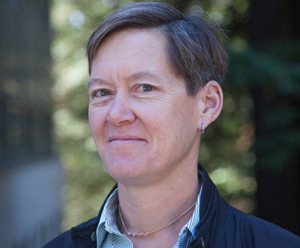Campus News
Student feedback on teaching: A new platform and a new approach
Starting this fall, the campus has a new way to gather and use student feedback about courses and instructors. In addition to supporting end-of-term course surveys, the new system offers more ongoing and active ways for instructors to collect feedback from students.

Starting this fall, the campus has a new way to gather and use student feedback about courses and instructors. The old course evaluation system has been retired, and has been replaced with a new platform called What*Do*You*Think? (WDYT). In addition to supporting end-of-term course surveys, the new system offers more ongoing and active ways for instructors to collect feedback from students.
Along with the change in platform comes an important change in nomenclature. Course evaluations are now called “SETs” (Student Experience of Teaching surveys). Numerous studies have shown that the results of these surveys have little relation to whether students learned anything in a course, rendering them questionable tools for genuinely “evaluating” the quality of instruction. If students are not learning, but the instructor gets excellent evaluations, what exactly is being evaluated? Indeed, a recent tongue-in-cheek experiment showed that giving students cookies in class produced significantly higher teaching “evaluations” than a cookie-less classroom, absent any other changes in instruction or course design.
Despite these shortcomings, instructors want to hear about how students experience the design and delivery of their courses. This feedback is an important resource that can help instructors improve their teaching, as well as promote student learning and engagement. Beginning later this year, WDYT will offer the opportunity to elicit up-to-date, timely, and useful feedback from students about their experience in a course, by making it possible to use simple instructor-generated surveys throughout the quarter or to add customized questions to the end-of-quarter departmental SET. The responses to these customized questions remain confidential to the instructor, and do not appear in the instructor’s personnel review file—a feature that makes WDYT a low-risk avenue for instructors wanting to hear from their students about how they think the course is going and make adjustments while the course is still underway, or before teaching the same course again.
The move toward “formative” feedback reflects a widespread effort in colleges and universities in the United States to make student feedback more immediate and more course- or even lesson-specific. At the same time, instructor-generated SETs can be used to ask students to reflect on their own learning in the course—a practice known as “metacognition,” that is linked with improved learning. By collecting real-time feedback and by helping students to take an active role in their own learning, well-crafted surveys delivered at key points in the term can play a part in improving the educational experience at UC Santa Cruz.
Later this year, once the campus has had a chance to get used to the new platform, the Academic Senate Committee on Teaching will be leading a pilot in which participating instructors will use and assess a set of alternative questions to those currently being used by most departments, to see if they correlate better with student learning.
The campus’s new approach to student feedback is part of an effort to address other known challenges with the traditional use of SETs. On the one hand, low return rates mean that instructors are only receiving feedback from a small portion of their students, and are reviewed in the academic personnel process using evidence from only a fraction of total class enrollment. On the other, numerous experiments have shown that SETs reflect deep bias and significantly disadvantage women faculty and faculty of color.
SETs will continue to be considered in instructors’ academic personnel reviews, alongside other measures that document teaching effectiveness. The Center for Innovations in Teaching and Learning has worked over the past two years with the Academic Senate to create resources to guide instructors on assembling other forms of evidence that supplement the SETs.
Instructors can do their part in raising return rates and making these surveys more useful by reminding students of the importance faculty place on knowing how students are responding to the course and instruction, informing students about the role of SETs in the personnel process, and educating students about the presence of bias in SET survey responses.
A public information session and workshop will be held at 2:30 p.m. on Nov. 7 at the Stevenson Event Center for all instructors (faculty, GSIs, and TAs) who want to learn more about WDYT and the campus’s evolving approach to the role of student feedback in efforts to support outstanding teaching and learning at UCSC.